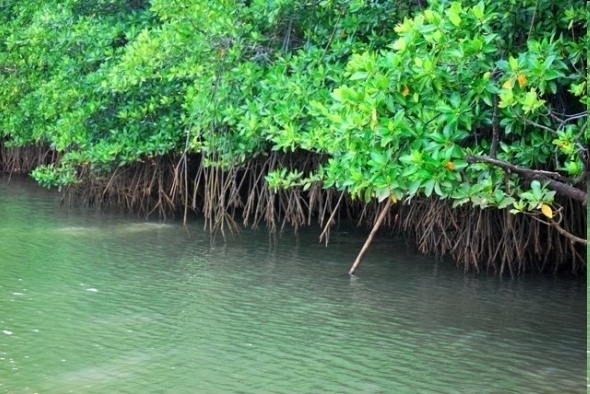Sipalay City, in partnership with the Energy Development Corporation (EDC) and Negros Forests and Ecological Foundation (NFEFI), has launched an ambitious four-year project to plant 20 hectares of mangrove forest along the city’s northern coastline.
The reforestation project aims to reverse the degradation and loss of mangrove forests in the area.

Signing the MOA on Friday to launch the mangrove project in Sipalay. (l-r) NFEFI president Paul Lizares, EDC's Roberto Cama, Sipalay City Mayor Oscar Montilla Jr, DENR's Chief Regional Executive Director Julian Amador
“The benefits of mangrove forests are enormous”, said NFEFI president Paul Lizares.
“More than 70 per cent of all tropical fish spend part of their lives in mangrove forests which give them shelter, food and nursery grounds.
“They provide protection from strong winds and waves, offering a buffer zone to help shield coastlines from storm damage. Additionally, they provide soil stabilization and help stop soil erosion. Sea grass beds and coral reefs depend on healthy mangroves.”
Mangroves have specially adapted aerial and salt-filtering roots and salt-excreting leaves which enable them to occupy the saline wetlands where other plant life cannot survive.
They are also useful in treating effluent, as the plants absorb excess nitrates and phosphates, thereby preventing contamination of near shore waters.
They absorb carbon dioxide and store carbon in their sediments, thereby lessening the impact of global warming.

